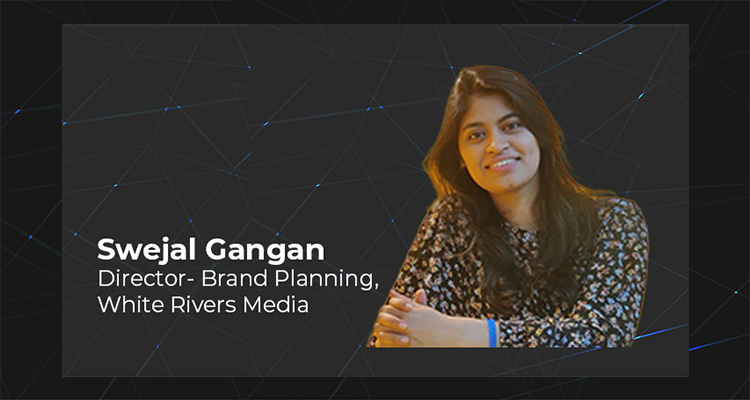If everything were perfect, there would be no need for laughter. Comedy is a coping mechanism, a response to discomfort, contradiction, and chaos. It’s the laugh at a funeral, the joke after heartbreak, the chuckle during a tech glitch. Laughter helps us breathe when things feel suffocating. It exists because something feels unresolved.
Everything in existence is defined by its opposite. Chaos needs order. A straight line across a blank canvas is not a story. Conflict brings energy. It’s the crack in the glass where light seeps through. And this tension is what makes storytelling magnetic. Without it, stories flatten, and audiences disengage.
Give CRED where it’s due
In recent years, Indian advertising has leaned into this tension, using humour to stand out. CRED’s campaign, Not Everyone Gets It, led the way. With icons like Anil Kapoor, Govinda, Bappi Lahiri, and others, the ads blended irony, nostalgia, and absurdity into films that were both chaotic and calculated. Each ad ended with a deadpan message: Download CRED. By making fun of itself and the format, CRED rewrote the rules of what a campaign could be.
Why humour? Dobara mat poochna
This isn’t new. Amul told us to be cheesy. Fevicol glued itself to our memory with rural storytelling. Happydent, Mentos, and Naukri.com’s Hari Sadu gave us sticky, smart humour. Chloromint’s Dobara mat poochna showed how sarcasm could drive recall and Seagram’s Men will be men played on the male stereotype. As humour took hold, the ad world became funnier and bolder.
Walking the tightrope
But humour now walks a finer line. In the age of outrage, one wrong move and the joke turns into backlash. Bombay Shaving Company faced criticism for trivialising a girl’s academic success. Schbang’s satirical Poonam Pandey campaign invited fury. Every joke must now be culturally aware, respectful, and grounded in insight.
Mrinal Lunia, Founder and CEO, Digitale, posits, “As someone who’s from a dedicated advertising family, having seen this industry very closely, I’ve always believed that humour is, but not limited to, a tactic or a trade secret. Using comedy to chase connections instead of just empty clicks is the key. In a landscape where every brand is shouting louder, the ones that win are those that can disarm with wit, stay culturally aware, and still say something meaningful. Humour, when used responsibly, lets brands drop the corporate mask and show up as human. That’s the kind of work we’re proud to create funny, yes, but also honest, insightful, and strategic.”
At Digitale, we’ve seen this play out firsthand:
MP Birla Cement Dealership Film
We used the familiar setting of a dramatic will-reading to parody family inheritance tropes. The twist? The family was fighting not over property, but over a cement dealership. A mundane product was elevated into a badge of pride, with humour as the emotional hook.
The punchline – that an MP Birla Cement dealership is more coveted than land or a mansion – lands sharply, using irony to elevate the brand’s value with tongue-in-cheek flair. By treating the dealership like a prized family heirloom, the film transforms a traditionally dry category into an emotional, entertaining narrative, making humour a vehicle for pride and aspiration to urge dealers to become a part of the MP Birla family.
Fabrex Thumbstopper Film for Excel Home Décor
Here, a burglar breaks into a house, only to be so enamoured by the upholstery that he forgets to steal. The scene ends with him caught – not red-handed, but red-faced. The brand lands softly through tactile indulgence, with humour as both shield and spotlight.
MyDigiGold Branded Content
We leaned into the comic rhythm of small talk with the recurring “aur bata?” loop. The sudden shift from casual banter to a spirited pitch for the myDigigold app adds surprise and satire, making the product message feel organic and funny. Ending with the same line, “aur bata?”, serves as a smart callback, keeping the tone light, conversational, and memorable. The message sticks because the tone stays familiar, conversational, and funny.
New-age wit, Old-school wisdom
Bold Care teamed up with Ranveer Singh to blend humour and intimacy in a campaign that tackled men’s health without shame. Shark Tank’s Save Bosses spoofed corporate culture. CRED’s Rahul Dravid as Indiranagar ka gunda and their Chacha Chaudhary x Suppandi crossover played on nostalgia with a wink.
Jar App used Prakash Raj and Nana Patekar to deliver puns with mafia flair. Acko made red tape funny. Wok Tok leaned into parody. Lahori Zeera poked fun at seriousness itself. Myntra’s Gen Z vs Boomer showdown kept the tone cheeky without being mean.
GoIbibo, Spotify Wrapped, and Dream11 used celebrities, satire, and self-awareness to keep humour relatable.
These campaigns are more than jokes. They are cultural commentary. They blur the line between brand and meme, ad and sketch. They tap into meta-humour, where celebs laugh at their own personas and brands mock the very idea of advertising.
Humour as a currency
In moment marketing, humour is gold. Swiggy, Zomato, and Zepto trade barbs in real-time. The reaction window has shrunk to hours. Every loss, slip-up, or viral trend becomes ad fodder. The challenge is not just to follow trends but to anticipate them. Humour must be timely, but it must also be timeless.
Why brands are getting funnier
In a country full of contrast and chaos, humour helps brands connect. It breaks the noise. It humanises. It softens hard truths and builds emotional currency. In overstimulated digital spaces, wit becomes clarity. Great comedy today is not just about laughs, but about relevance, timing, and empathy.
Because sometimes, a little joke told at the right time can be everything.
Share your exclusive thoughts to:
editor@thefoundermedia.com




